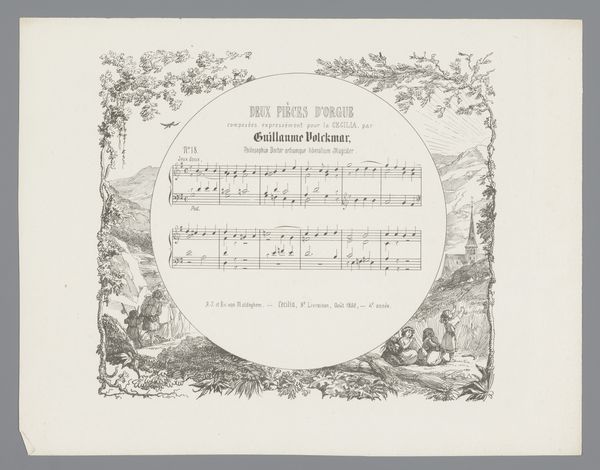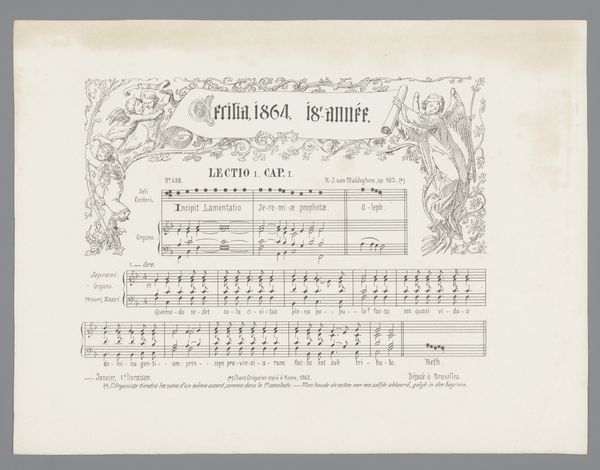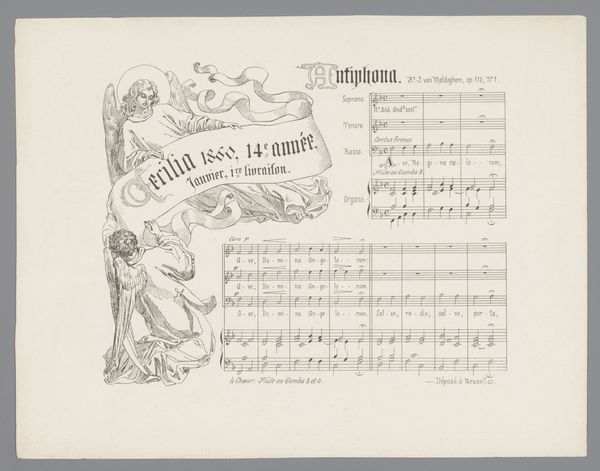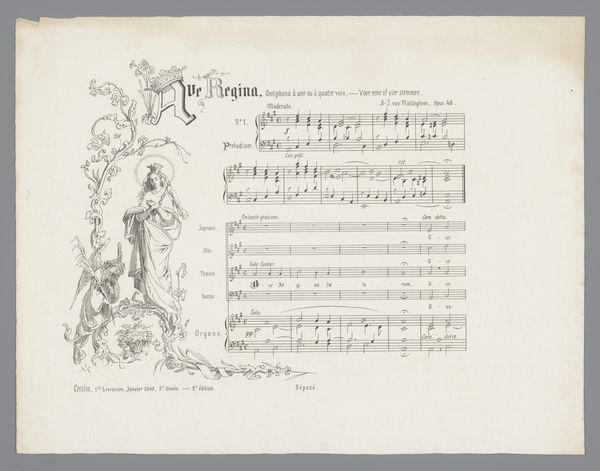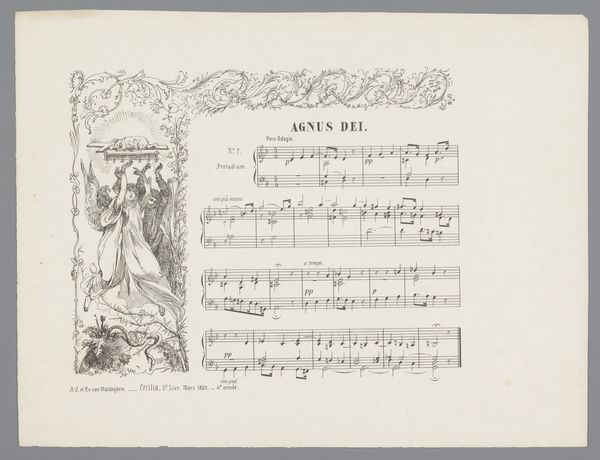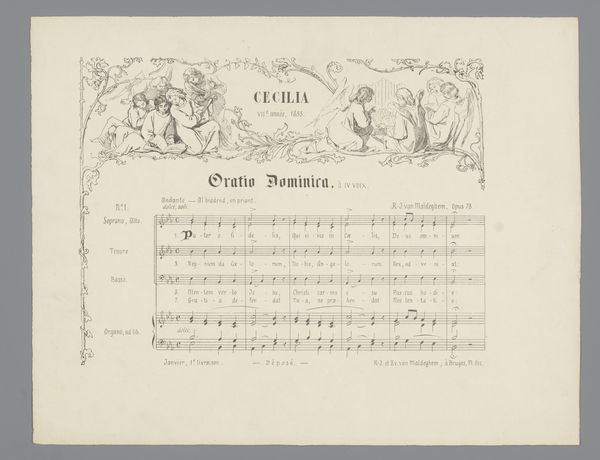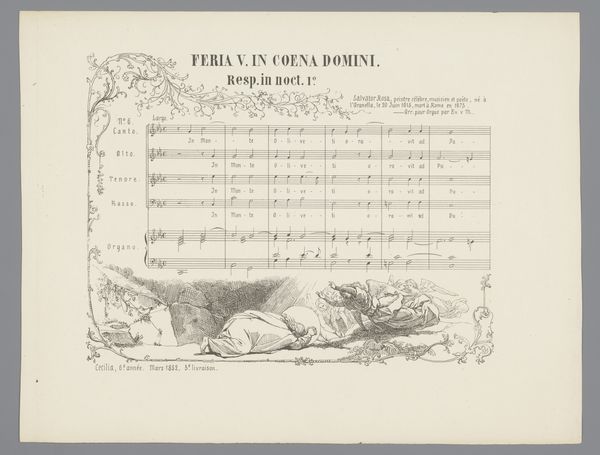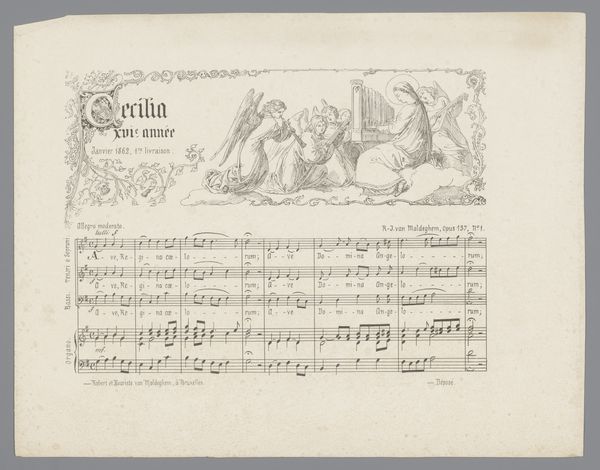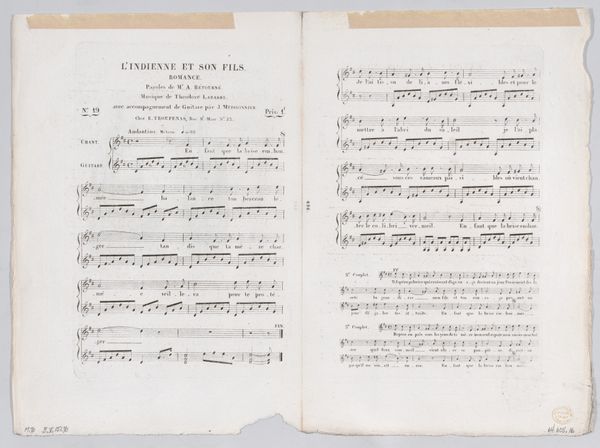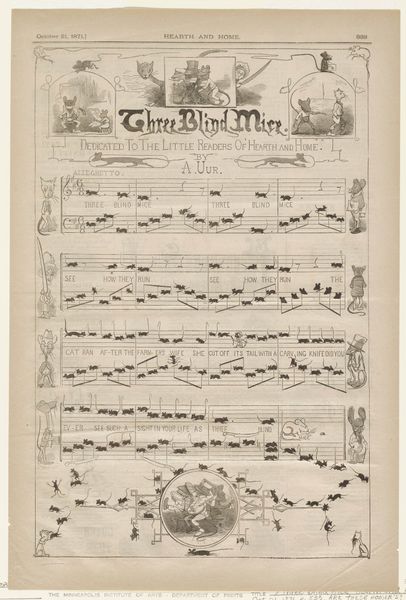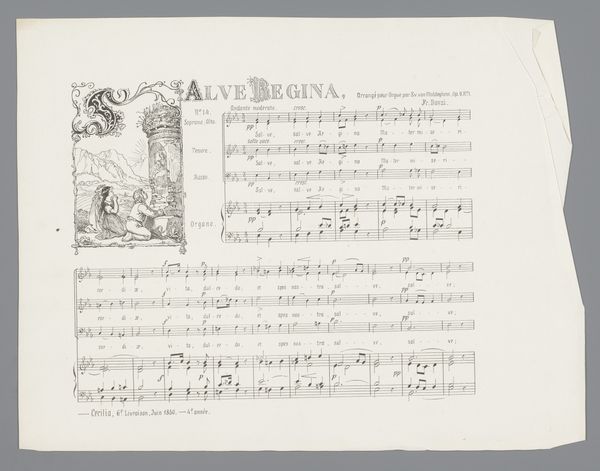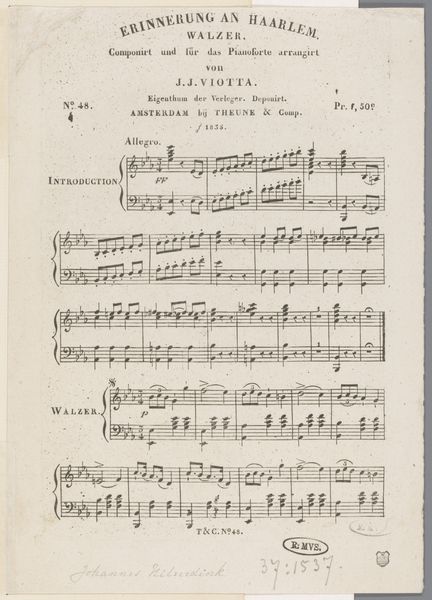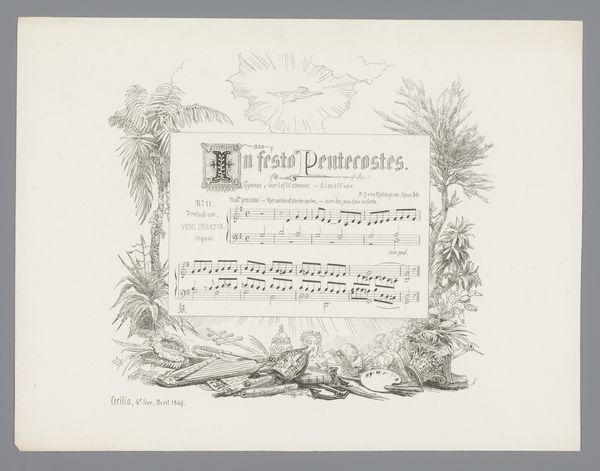
Dimensions: height 272 mm, width 349 mm
Copyright: Rijks Museum: Open Domain
Curator: This engraving by Eugène Van Maldeghem, titled "Rankwerk met banderol," dates back to 1863. The medium appears to be print on paper, characteristic of graphic arts from that era. Editor: The immediate feeling is one of aged reverence. The pale palette and delicate lines suggest something precious, meticulously crafted yet bearing the marks of time and possible personal use as a sketchbook piece. Curator: Exactly, looking closer we notice this isn’t merely decorative. The inclusion of musical notation points towards functionality, revealing a dedication or title page, perhaps from a larger musical work intended for personal devotion or performance. Editor: I agree. It really draws our attention to the socio-cultural contexts surrounding musical composition and distribution during the mid-19th century. Engravings like this democratized music to some extent, yet also reinforced existing class and gender hierarchies, think who has access and for what kind of artistic creation... Curator: Considering the meticulous engraving process, think of the labor involved in producing multiple copies! The very materiality of this print – the paper itself, the ink used, the wear and tear it has sustained– speaks volumes about its journey through time. Its very existence prompts critical questions about its cultural meaning. Editor: Indeed. Who owned this, how was it used, and how might this particular item challenged and conformed to existing expectations surrounding domestic life in the 19th-century Europe? Perhaps it circulated among amateur female musicians, a vital and often-overlooked creative force at the time. The visual reference to Saint Cecilia only reinforces that sense. Curator: Thinking about the materials and their transformation through labor allows a deeper understanding beyond surface appearances and traditional art historical classifications. Editor: I love how that makes it a point of engagement with broader narratives surrounding art, music, and societal transformations. It serves as a conduit between our historical awareness and present moment, urging us to reflect.
Comments
No comments
Be the first to comment and join the conversation on the ultimate creative platform.
